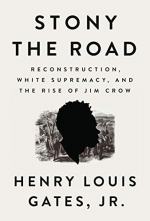
|
| Name: _________________________ | Period: ___________________ |
This test consists of 5 multiple choice questions, 5 short answer questions, and 10 short essay questions.
Multiple Choice Questions
1. Booker T. Washington believed that what type of work was most suited to the majority of African Americans?
(a) Academic.
(b) Medical.
(c) Industrial.
(d) Artistic.
2. Who led a revolt among the slaves in Charleson, South Carolina in 1822?
(a) Joseph Cotten.
(b) Gabriel.
(c) Nat Turner.
(d) Denmark Vesey.
3. How many pages did the pamphlet entitled "Miscegenation" contain?
(a) 12.
(b) 45.
(c) 72.
(d) 21.
4. Jim Crow segregation was institutionalized in what decade?
(a) The 1850s.
(b) The 1890s.
(c) The 1870s.
(d) The 1920s.
5. How many years after the Plessy vs. Ferguson verdict did Charles W. Chesnutt publish his novel entitled The Marrow of Tradition?
(a) 5.
(b) 35.
(c) 15.
(d) 25.
Short Answer Questions
1. The concept of the New Negro was used by a subgroup of African Americans between which two years?
2. What was NOT a quality of African Americans that Du Bois wrote needed to be curtailed before the fight for equality could be won?
3. The act of lynching was actually used to frighten African American men out of taking what action?
4. Who was "anointed in the white press as the manifestation, the embodiment, of the New Negro" (191)?
5. In what country did advertising images of black people acknowledge the possibility of white women being attracted to black men?
Short Essay Questions
1. What element caused the New Negro movement to emerge?
2. For what reasons does Gates consider a particular Mississippi Supreme Court Justice's words about African Americans in 1898 so significant?
3. How does Barbara Johnson define a stereotype and why does Gates consider her definition useful?
4. What was the difference between the circulation of images depicting black people before, versus after, the Civil War?
5. Discuss the significance of Booker T. Washington's 1895 Atlanta Compromise speech.
6. What percentage of the African American community was still enslaved in 1860?
7. Which gains in the area of racial equality made during Reconstruction had been lost by the arrival of the twentieth century?
8. Which aspect of W.E.B. Du Bois's ideas about race does Gates find problematic?
9. Discuss the two forms of what Gates and others call "neo-slavery" (186).
10. What did Mississippi Supreme Court Justice Joseph McKenna write about African Americans in a majority opinion report in 1898?
|
This section contains 1,088 words (approx. 4 pages at 300 words per page) |

|




